Recent Posts
Revitalize Your Home: The Ultimate Guide to Residential Spring Cleaning in Salt Lake City, UT
4/6/2024 (Permalink)
 Deep Spring cleaning in NE Salt Lake City.
Deep Spring cleaning in NE Salt Lake City.
As the chill of winter melts away and the vibrant colors of spring begin to emerge, it's time to welcome the season with open arms and a fresh perspective. And what better way to embrace the spirit of renewal than by embarking on a thorough residential spring cleaning journey? In Salt Lake City, UT, where the beauty of nature is interwoven with urban living, spring cleaning takes on a special significance. From decluttering cozy apartments in downtown to refreshing spacious suburban homes, residents across the city are gearing up to revitalize their living spaces. In this comprehensive guide, we'll explore the ins and outs of residential spring cleaning in Salt Lake City, offering tips, tricks, and expert advice to help you achieve a home that's not only clean but also rejuvenated.
1.The Importance of Spring Cleaning:
Spring cleaning isn't just about tidying up; it's about breathing new life into your home and creating a space that nurtures both your physical and mental well-being. After months of hunkering down indoors during the winter, our homes often accumulate dust, clutter, and stale energy. A thorough spring cleaning ritual serves as a reset button, clearing out the old to make way for the new. In Salt Lake City, where residents cherish the outdoor lifestyle, a clean and organized home provides the perfect sanctuary to unwind after a day of hiking in the Wasatch Mountains or exploring the city's vibrant cultural scene.
2.Getting Started:
Before diving headfirst into your spring cleaning endeavors, it's essential to have a plan in place. Start by setting aside dedicated time on your calendar, perhaps a weekend or a series of evenings, to tackle each room systematically. Create a checklist of tasks for each space, focusing on areas that tend to accumulate the most clutter and grime. In Salt Lake City, where seasonal transitions are marked by distinct changes in weather, consider incorporating outdoor tasks such as cleaning windows, sweeping patios, and sprucing up garden beds into your spring cleaning routine.
3.Decluttering:
One of the cardinal rules of spring cleaning is decluttering. Take this opportunity to assess your belongings and purge items that no longer serve a purpose or bring you joy. In Salt Lake City, where minimalist living is embraced by many, decluttering can be a liberating experience. Sort through closets, drawers, and cabinets, donating gently used clothing and household items to local charities or hosting a neighborhood swap meet to exchange goods with friends and neighbors. By streamlining your possessions, you'll not only free up physical space but also create a sense of clarity and calm within your home.
4.Deep Cleaning:
Once the clutter has been cleared, it's time to roll up your sleeves and dive into the deep cleaning tasks. In Salt Lake City, where residents take pride in their homes, attention to detail is key. Start by dusting ceiling fans, light fixtures, and baseboards, paying special attention to often overlooked areas such as air vents and behind furniture. Invest in high-quality cleaning supplies that are environmentally friendly and safe for your family and pets. For stubborn stains and built-up grime, consider hiring professional cleaners who specialize in eco-friendly methods tailored to Salt Lake City's unique environmental considerations.
5.Refreshing Indoor Spaces:
As you work your way through each room, take the opportunity to refresh and rejuvenate indoor spaces. In Salt Lake City, where natural light floods through expansive windows, keeping interiors bright and airy is a top priority. Wash curtains, blinds, and drapes to remove dust and allergens, allowing sunlight to filter in unobstructed. Swap out heavy winter bedding for lightweight linens and add pops of color with fresh flowers or vibrant throw pillows. Consider rearranging furniture to optimize flow and functionality, creating inviting spaces for relaxation and entertainment.
6.Embracing Outdoor Living:
In Salt Lake City, where the outdoors beckon year-round, spring cleaning isn't limited to indoor spaces. Take advantage of milder temperatures and longer daylight hours to spruce up outdoor living areas. Sweep porches and decks, power wash exterior surfaces, and trim overgrown foliage to enhance curb appeal. Invest in durable outdoor furniture and textiles designed to withstand Utah's ever-changing weather conditions, creating inviting spaces for alfresco dining and gatherings with family and friends.
7.Sustainable Practices:
As residents of Salt Lake City, we have a responsibility to protect and preserve the natural beauty of our surroundings. Incorporating sustainable practices into your spring cleaning routine is not only environmentally friendly but also essential for safeguarding the health of our community. Choose cleaning products that are free from harmful chemicals and opt for reusable cloths and mops instead of disposable alternatives. Compost organic waste and recycle whenever possible, reducing the amount of waste sent to landfills. By making conscious choices, we can all contribute to a cleaner, greener Salt Lake City for generations to come.
Residential spring cleaning in Salt Lake City is more than just a chore; it's a celebration of renewal and rejuvenation. By decluttering, deep cleaning, and refreshing our homes, we create spaces that nurture our bodies, minds, and spirits. From downtown apartments to suburban homes, residents across the city are embracing the season with open arms and a commitment to sustainable living. So roll up your sleeves, grab your cleaning supplies, and join the spring cleaning revolution in Salt Lake City. Your home—and the planet—will thank you for it.
5 Steps To Take After a Sewer Backup
4/1/2024 (Permalink)
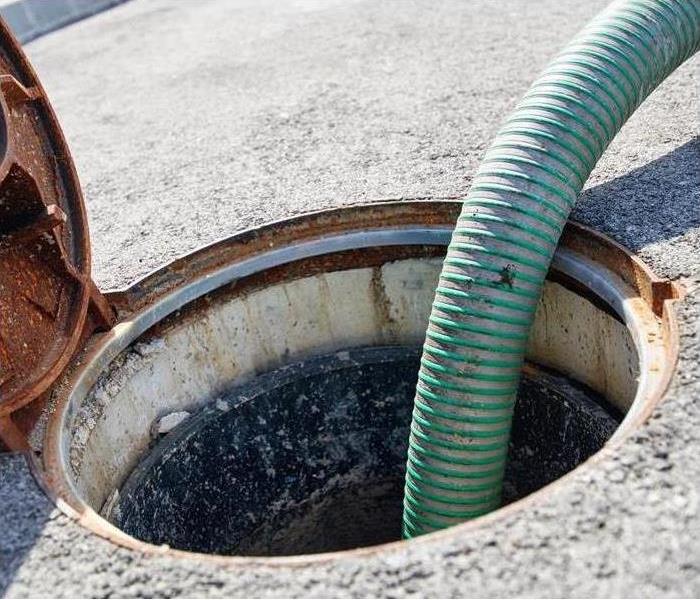 Sewage cleanup in Park City, UT.
Sewage cleanup in Park City, UT.
A sewer backup may be one of the most damaging problems with which you have to deal as a business owner or manager in Park City, UT. Not only is it a disgusting process, but you must also keep employees and customers safe from exposure to germs and chemicals. There are specific steps to keep everyone and your building as safe as possible during sewage cleanup.
Safety Steps For Sewage Cleanup
- Protect Yourself Against Various Hazards
First, it's essential to protect yourself by wearing personal protective equipment. Available PPE includes hair covers, safety goggles, respirators, rubber gloves, coveralls and waterproof shoe covers. Most of this gear can be bought in disposable form to better prevent cross-contamination. The amount of PPE necessary depends on the severity of the sewage. However, if there is a question, more is better than less.
Also, do not walk into any standing water where electrical components are plugged in. You will need to shut off the power to the area because an electrical current can pass through the water. Merely stepping a foot into the room could be extremely hazardous. If you can't safely navigate to the breaker box, call the power company or experienced electrician to turn the electricity off before you take any further action.
- Try Unclogging the Blockage
Next, you must unclog the sewer blockage and stop any running water. Shut off the water supply at the source or opt for the entire building. It could take the work of professionals if the backup is down the line a bit. If you have a flooded toilet, you can use a plunger or drain snake to unclog it yourself.
- Extract All Standing Water
Sewage water contains various bacteria and other contaminants that can quickly spread. During the sewage cleanup process, it's essential to extract the standing water as soon as possible. Standing water can also damage fast, so time is of the essence. If you decide to conquer the task yourself, a wet/dry vacuum can efficiently remove the water and smaller debris.
- Dry the Area and Contents
Once you have extracted all of the standing water, it's time to dry everything in the affected area as quickly as possible. This could mean tearing out water-damaged flooring (carpet will probably be ruined) and even some drywall. You may also need to remove most if not all of your contents from the area to dry them outside and to thoroughly clean them and the affected area.
You can use fans, heaters and fresh air to dry everything. Water damage restoration professionals can dry an area faster with industrial-grade fans and other equipment.
- Sanitize the Area and Contents
Finally, everything must be thoroughly cleaned and sanitized. Be sure to get into tiny spaces, even walls and furniture that have come in contact with the water and contaminants. After experiencing a flooded toilet or another type of sewer backup, performing a thorough sewage cleanup is critical. This can be a very labor-intensive job, even for a small amount of standing water. However, taking time to go through each of these steps can keep everyone safe and prevent avoidable damage to your building and its contents.
5 Things To Teach Your Kids About Fire Safety
4/1/2024 (Permalink)
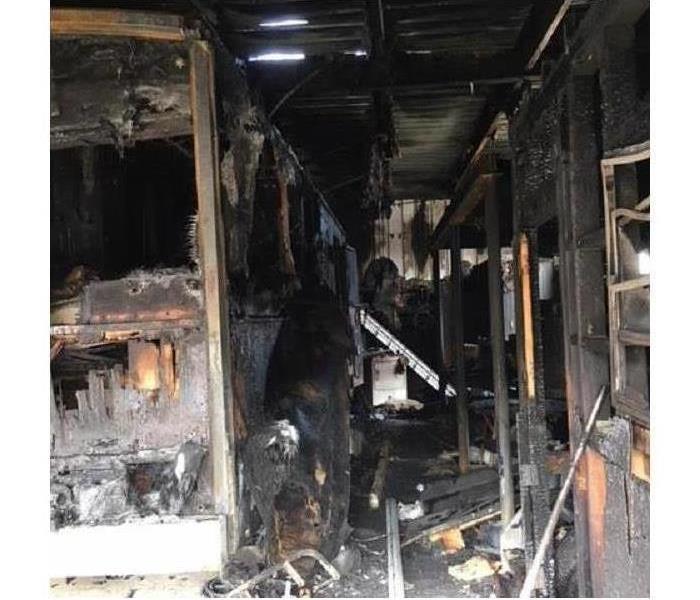 Fire damaged storage in Salt Lake City, UT.
Fire damaged storage in Salt Lake City, UT.
Teaching kids safety is an important factor when making an emergency fire plan for your Salt Lake City, UT, home. One way you can help protect them is by instructing them what to do if a fire does occur. Many firemen and fire damage restoration professionals agree that learning the following tips can help.
5 Lessons About Fire Safety
1.What Fire Hazards Are
One step toward preventing a home fire is to tell your children what a fire hazard is. This way they will know what items not to play with, and to tell you immediately if they see something amiss.
2. How To Stay Low
During a fire smoke and heat rise, meaning the cooler air is closer to the floor. Teaching your child to stay low can help them avoid the smoke and find fresher air.
3. How To Check a Door
One important step for kids safety during a fire is to know how to check a door before opening it. They should know to use the back of their hand to test the door’s surface for heat, and to open it only if it doesn’t seem hot.
4. What Safe Routes Are
Safe exit routes are an important part of a fire escape plan. Explain to your child where the closest exits are and how to use them safely.
5. Where to Meet Up
Instruct your child to go to a pre-selected location to meet up with you once they’re safely out of the house. This should be an easily identifiable location such as a neighbor’s porch or a fire hydrant.
In the event of a fire, kids' safety is important, and by teaching your child these things, you can feel more secure knowing they understand what to do in a fire. Telling them what a fire hazard is can help prevent a fire before it starts. They should also learn to stay low, check doors before they enter a room, follow safe routes out of the house, and where to meet up with everyone else.
How to Replace a Leaking Toilet
4/1/2024 (Permalink)
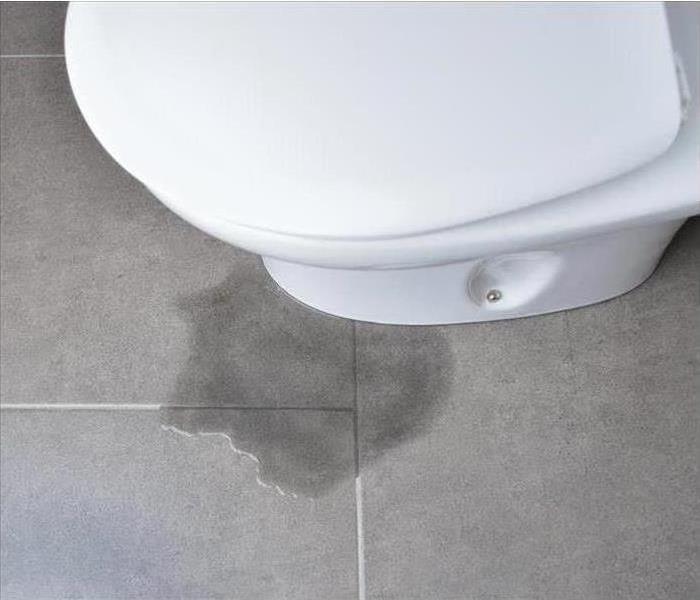 Leaking toilet in Salt Lake City, UT.
Leaking toilet in Salt Lake City, UT.
Although most commodes last for decades, they do need to be updated every now and then. If you have a leaking toilet in your home in Salt Lake City, UT, it might be time to replace it. Here are the steps to take to make this process as easy as possible.
3 Steps for Replacing a Leaking Toilet
1. Disconnect the Water Supply
Whether you are doing a toilet repair or installing a new one, never try to do work on a leaking toilet without disconnecting the water supply. This can lead to a large amount of standing water in your bathroom. In order to disconnect the water-supply tube you must loosen the compression nut on the shutoff valve.
2. Remove the Old Toilet
Depending on how long the old toilet has been in place, it may be stuck to the flooring. In order to remove it, you will need to unscrew any bolts and then gently rock it back and forth until it comes off the floor. Typically, there is a wax seal holding it in place, so you will need to break this before it will come off completely. If you are having trouble removing it yourself, you may want to call a professional to come help.
3. Install the New Toilet
Before you install the new toilet, you will need to get the area cleaned up, and remove any excess wax from the gasket. When you put the new one in place, make sure it is properly aligned. You can then secure it with the bolts. Some people choose to use caulk around the base to protect against mold growth. You should check with your building department to see if this is required in your area.
If you feel uncomfortable replacing the leaking toilet yourself, you should consider calling a water damage company in Salt Lake City, UT, to help you. They may also be able to work with you on the cleanup and check the extent of the damage. This may prevent larger or future issues from occurring.
How to Prevent Mold Growth After Water Damage in Salt Lake City, UT
3/9/2024 (Permalink)
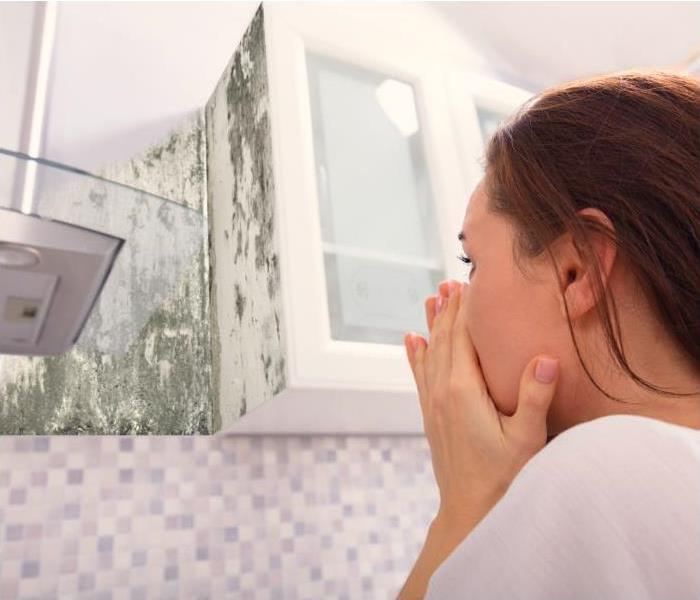 Prevent Mold Growth in Park City, UT
Prevent Mold Growth in Park City, UT
Water damage can be a homeowner's worst nightmare, and when it occurs, the risk of mold growth becomes a significant concern. Salt Lake City, UT, with its unique climate and topography, presents specific challenges when it comes to dealing with water damage and preventing mold. In this comprehensive guide, we'll explore effective strategies to safeguard your home and belongings from mold growth after water damage in the Salt Lake City area.
Understanding the Salt Lake City Climate:
Salt Lake City experiences a semi-arid climate with hot summers and cold winters. This climate variation can contribute to water damage through factors like heavy snowfall followed by rapid thaws, flash floods during summer storms, and occasional plumbing issues. These diverse scenarios require tailored approaches to prevent mold growth effectively.
Immediate Actions after Water Damage:
The first 24 to 48 hours are crucial when it comes to preventing mold growth after water damage. Quick and decisive actions can significantly impact the outcome. Here's a step-by-step guide on what to do immediately:
Safety First:
Ensure everyone's safety by turning off the electricity and gas supply to the affected area. If the water damage is extensive, it's advisable to evacuate until professionals deem the area safe.
Stop the Water Source:
Identify and stop the source of water leakage or flooding. This could be a burst pipe, a leaking roof, or flooding from heavy rains.
Remove Excess Water:
Use pumps, wet/dry vacuums, or buckets to remove standing water. The faster you can extract water, the less likely mold will have a chance to develop.
Ventilation:
Open windows and doors to facilitate air circulation. This helps in drying out the affected areas and preventing mold spores from settling.
Remove Wet Items:
Move wet furniture, carpets, and personal belongings to a dry area. Salvage what you can, and discard items that are beyond repair.
Use Dehumidifiers:
Deploy dehumidifiers to reduce the moisture levels in the air. Lower humidity inhibits mold growth, making it a crucial step in the prevention process.
Drying Out Your Home:
Once you've addressed the immediate concerns, the next step is to thoroughly dry out your home. In Salt Lake City, where cold winters can complicate the drying process, it's essential to be diligent in this phase:
Professional Drying Equipment:
Consider hiring professionals with industrial-grade drying equipment. These experts can ensure that even hard-to-reach areas are thoroughly dried, reducing the risk of mold growth.
Focus on Building Materials:
Pay special attention to structural elements like drywall, insulation, and wooden structures. These materials can retain moisture, providing an ideal environment for mold if not adequately dried.
Flooring Considerations:
Carpets, especially if saturated, can be a breeding ground for mold. If possible, remove and replace them. Hardwood floors may also need specialized drying techniques to prevent warping.
Inspection for Hidden Moisture:
Perform a thorough inspection to identify any hidden pockets of moisture. This may involve using moisture meters and infrared cameras to detect moisture behind walls or under flooring.
Preventing Mold Growth:
With the initial cleanup completed, it's time to implement preventive measures to ensure mold doesn't take hold. In Salt Lake City's climate, where humidity levels can vary, these steps are crucial:
Proper Ventilation:
Ensure that your home is adequately ventilated. Use exhaust fans in bathrooms and kitchens, and consider installing a whole-house ventilation system. Proper ventilation helps control humidity levels, reducing the likelihood of mold growth.
Monitor Humidity Levels:
Keep an eye on indoor humidity levels, especially during seasons with higher humidity. Aim for humidity levels between 30-50%. Use dehumidifiers if necessary.
Regular Inspections:
Perform regular inspections of your home, especially in vulnerable areas like basements and attics. Look for signs of water leaks, condensation, or dampness. Address any issues promptly.
Waterproofing:
Invest in waterproofing measures, such as sealing cracks in the foundation and walls. This can prevent water from seeping into your home, reducing the risk of future water damage.
Landscaping Considerations:
Ensure proper grading around your home to direct water away from the foundation. Keep gutters clean and in good condition to prevent water from overflowing and causing damage.
Proper Storage:
Store items in areas less prone to water damage. Elevate belongings in basements, use water-resistant storage containers, and avoid storing items directly on the floor.
Professional Assistance:
In some cases, especially with extensive water damage, seeking professional assistance is the best course of action. Professional restoration companies in Salt Lake City have the expertise and equipment to handle large-scale water damage effectively. They can conduct thorough assessments, provide a comprehensive plan for cleanup and drying, and offer preventive measures to safeguard against mold.
Water damage is a significant concern for homeowners in Salt Lake City, UT, given its unique climate and topographical challenges. However, with prompt action, thorough drying, and preventive measures, you can minimize the risk of mold growth and protect your home and belongings. By understanding the specific needs of your region and implementing the strategies outlined in this guide, you can navigate the aftermath of water damage with confidence, ensuring a safe and mold-free living environment for you and your family.
3 Steps To Stop a Toilet From Overflowing
9/8/2022 (Permalink)
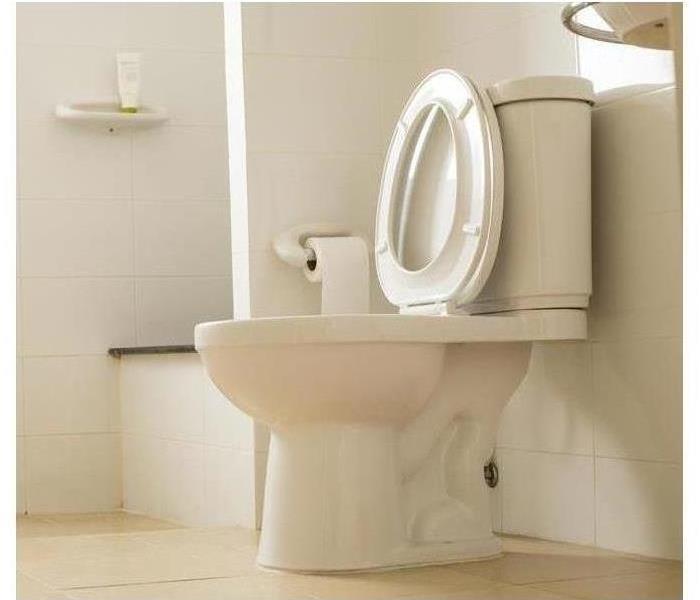 If you need to replace your toilet, contact a water damage mitigation and restoration company.
If you need to replace your toilet, contact a water damage mitigation and restoration company.
A drain line blockage can result in a flooded toilet. Homeowners can take three steps to stop a toilet from overflowing and limit the extent of sewer damage at a residence in Salt Lake City, UT.
Steps To Stop a Toilet From Overflowing
1. Contain Damage
Contaminated water can cause major water damage. If this water sinks into carpet or porous building materials such as drywall, these materials will likely need to be torn out and replaced. Use towels or a mop to stop the spread of sewage backup.
2. Use a Plunger or Snake
Once a homeowner has taken measures to try to stop the spread of sewer damage, he or she should address the cause of the problem. If the backup is due to a minor clog close to the floor drain, plunging a toilet may be enough to clear the clog and stop the overflow.
If the clog is more severe, insert an auger or snake into the toilet. Some augers have hand cranks while others can be attached to a power drill. It may be more effective to remove the toilet and snake the floor drain directly. You will need to use specialized tools and remove water from the bowl and tank or use a solidifying gel. Clear deeper clogs by snaking the drain cleanout in a basement or crawlspace.
3. Contact a Plumber
Calling a plumber can be easier than removing a toilet or dealing with a drain cleanout. If you do not have a snake or the skill or tools necessary to attempt advanced plumbing techniques, a trained professional is your best bet. If the problem originates in a municipal main, contact a sewage company.
If a flooded toilet causes extensive sewer damage, a homeowner should contact a water damage mitigation and restoration company located in Salt Lake City, UT. Experts can remove damaged materials, promote drying to prevent mold and restore the affected area.
3 Tips for Fixing a Flooded Basement
8/11/2022 (Permalink)
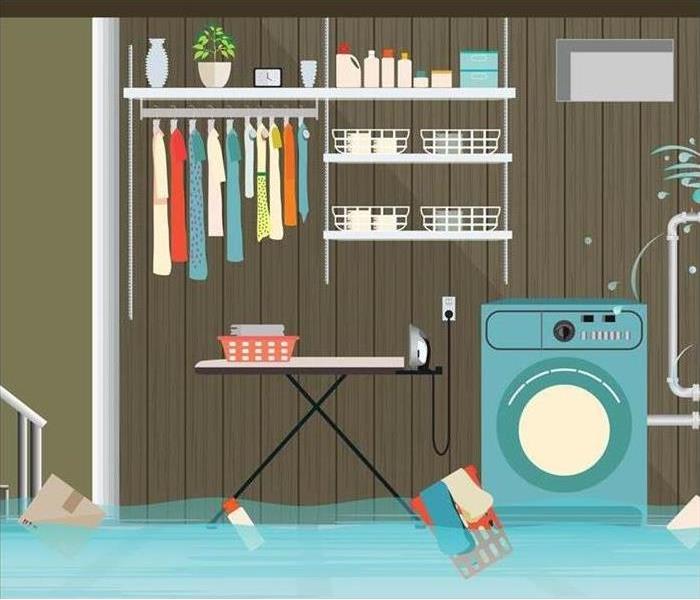 A flood in your basement can result in serious water damage.
A flood in your basement can result in serious water damage.
A basement flood can be a frustrating problem to deal with. If your home has a basement, it is important to familiarize yourself with what steps you can take to fix a flooded basement before a flood occurs. These three tips can help.
Tips for Fixing a Flooded Basement
- Remove the Water Before You Go in
Many basements have electrical appliances, wiring, and electrical panels that can create an electrocution hazard in a flooded basement. If you are dealing with a shallow flood, and you can access the service panel to turn off the electric circuits in the basement without going into the water, you may be able to remove the water using a hose from a shop vac on an upper floor. However, if the water level is above electrical outlets, it is best to call the fire department, rent a heavy-duty gas-engine pump or contact a water remediation company in Salt Lake City, UT, to assist you.
- Don't Try To Save Your Flooded Electrical Items and Appliances
The Gas Appliance Manufacturers Association and the National Electrical Manufacturers Association recommend replacing any mechanical or electrical equipment that has been exposed to a basement flood. Any fixtures, outlets, switches, wiring, electrical motors or appliances that have been exposed to flood water should be removed and discarded, rather than repaired. Check with your insurance professional if you need clarification about whether your insurance coverage will cover replacement versus repair costs for damaged items.
- Take Preventative Measures
Once you get your basement restored, take steps to prevent flooding from occurring again. Adding foundation drains, a generator to keep your sump pump operating during a power outage or a backup sump pump can help keep water out of your basement.
A basement flood can result in serious water damage to your home. These three tips can help you restore your home to preloss condition and prevent future problems from occurring.
SERVPRO Offers Expert Document Restoration Services
8/11/2022 (Permalink)
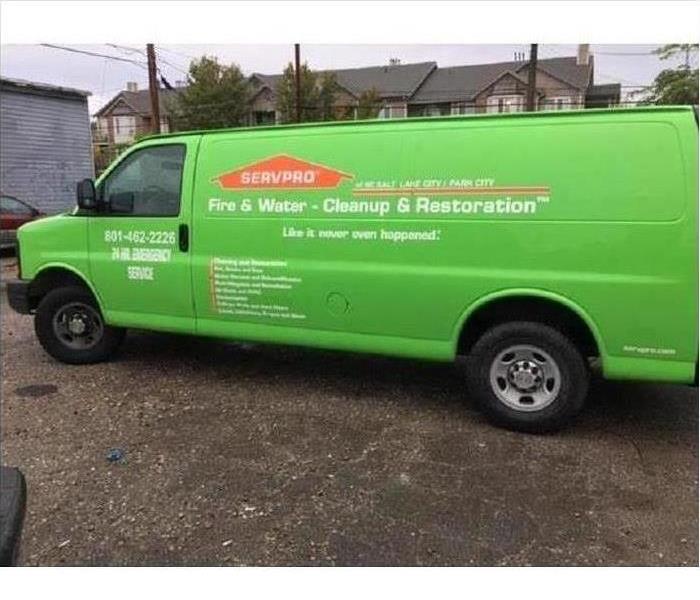 SERVPRO of NE Salt Lake City can tackle any project size.
SERVPRO of NE Salt Lake City can tackle any project size.
A significant water, sewer or flood event can damage all your essential documents and files. If recovery is going to happen, it needs to start right away. SERVPRO understands this and operates a secure document restoration facility. Professionals there control the process and give your documents the treatment they deserve.
Different Types of Documents Require Different Responses
Not all documents have the same level of importance. Not all records are paper. Not every document needs restoration. Each document gets an appropriate level of treatment. The specific treatment depends on the document’s type and importance. Here are some examples of the types and the treatments they might receive:
- Important documents need restoration. An important document has an original signature, hand-written notes or an official mark. If a copy won’t do, it’s important. A special freeze-drying process performs document drying. Gamma irradiation sterilizes these documents when bacteria and other contaminants are a concern. Examples of important documents would be:
- Mortgages
- Wills
- Stock, bond and other certificates
- Blueprints
- Maps
- Books and manuscripts
- Irreplaceable legal documents
- You can digitize less critical documents. In most situation, it’s not the document that is important. It is the information on the document. In these cases, it is more cost-effective to digitize and reprint the document. An alternative is to digitize and reproduce it when needed.
- Some documents are not paper-based. Developed films and x-rays may seem undamaged but still, require cleaning. The same applies to microfiche and microfilm. Photographic prints may pose a challenge to the document restoration specialists.
- Medical records require special treatment. SERVPRO’s HIPAA Master-Certified technicians perform this cleaning. Round-the-clock surveillance of the restoration activity ensures confidentiality.
Perhaps a flooded basement destroyed your home office in the Salt Lake City, UT, area. Maybe a roof failure at work soaked the company accounting records. The amount of damage doesn’t matter. The document restoration experts at SERVPRO tackle projects of any size.
Keep Your Losses Low During Business Interruption
7/30/2022 (Permalink)
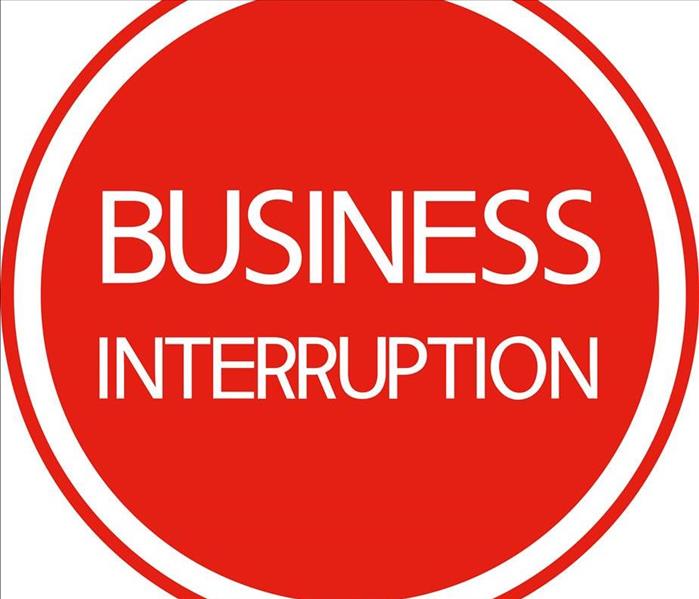 Reduce your losses during business interruption.
Reduce your losses during business interruption.
Anything from a broken pipe in an isolated location to flooding from a natural disaster can bring your commercial operations to a halt. In Salt Lake City, UT, this can mean significant losses and the need for a business interruption claim. The good news is that there are steps you can take to keep your insurance claim down, reduce your losses and get back to your normal routine.
When Flooding Threatens the Well-Being of Your Business
Every year flooding brings businesses to a halt when water heaters malfunction or extreme storms cause water to rise. Business interruption insurance coverage is crucial to surviving any type of major damage to your commercial property:
- Loss due to fire or an explosion
- Large water damage from natural catastrophes
- Equipment malfunctions and breakdowns
- Electrical failures and fires
- Crime or vandalism
Just about every business experiences some type of disruption because of one or more of these risks. An appropriate insurance policy is the best way to make sure your business doesn’t crumble because of lost revenue while you can’t continue with your normal daily routine.
Keep Your Insurance Claim Low
Preventative maintenance is one of the best ways to reduce risks and keep any loss or expense low. Talk to your insurance provider and local resources about the most common risks for your type of company and location. After determining the risks, estimate the cost of possible interruptions, be sure you thoroughly understand your coverage, create your plan for preventing hazardous scenarios and then put together your crisis response plan.
Reduce Losses When Disaster Strikes
In spite of your best planning, it is impossible to prevent all emergencies. When you do have to shut your doors because of damage, work quickly to resolve the issues. The faster you can recover, the lower you can keep your claim. Your insurance company may recommend a water damage cleanup and recovery agency. These professionals have a well-planned approach to bringing any ongoing damage to a halt, as well as an emergency response to prevent additional or secondary harm. Cleanup and repair professionals have the training, equipment and time necessary to get your property back into functional condition and ultimately return it to its “like new” condition.
Open Your Doors and Return to Business
Your crisis response plan is crucial during a disaster. The first part of this plan should cover how to keep employees safe, an evacuation procedure and the steps that employees should take during an emergency. It should outline how to maintain communication with your customers and partners. Other parts of this plan should include a chain of command and specific tasks and responsibilities that employees will carry out during and after the disaster. Create a scripted message, so that all employees can share reliable information that doesn’t conflict with other messages and cause confusion.
With the proper insurance coverage in place, the involvement of cleanup and recovery professionals, and an operational and communication plan ready to go, you can move forward with confidence that you are ready to face flooding and other disasters. You’ll minimize the risk of possible damage and limit the impact that emergency scenarios will cause.
What Happens During Fire and Smoke Damage Cleanup?
7/25/2022 (Permalink)
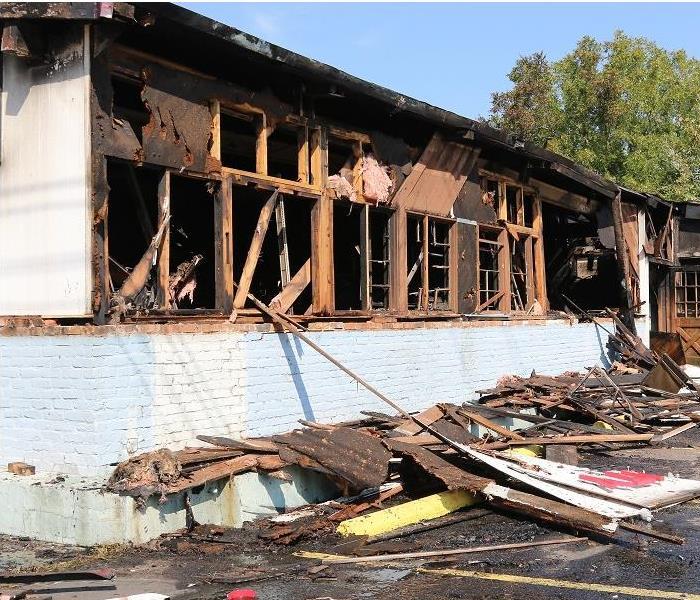 Fire damage
Fire damage
Experiencing a fire at your commercial building in Salt Lake City, UT, can be devastating. What's next? Are you going to have to be out of service for a while? Even the results of a small fire can be costly in terms of replacing lost property, being out of business during the restoration process and restoring whatever can be salvaged. Several types of loss can result from a fire, including charring, soot, and smoke damage. Specific basic steps must be taken to mitigate the amount of loss, clean, and restore the commercial property.
Fire, Smoke and Soot Damage Cleanup Process
Once the flames are extinguished, it's time to begin work to return your building to its pre-fire state. Usually, the best option is to hire fire damage restoration professionals to be confident that your building and salvageable property are thoroughly cleaned, restored and inspected. These experts will typically take the following steps.
1. Assess the Damage
Experts need to perform a thorough assessment of the damage before getting to work. Evaluating the loss will help the professionals determine the best methods to restore the property. From this assessment, they will create a remediation plan based on the type and extent of the loss.
2. Mitigate the Damage
One of the most crucial parts of the process is to mitigate the damage as much as possible. To prevent further loss, technicians often shut off the electricity to the affected area or the entire building and shut off the water main. It may also include roof tarping and boarding up windows and doors until structural repairs can be completed.
3. Create a Remediation Plan
After the loss is under control, the professionals will create a plan to best remediate the water, fire, soot and smoke damage. You will probably see the technicians wearing personal protective gear during the process. This PPE will keep them safe and also help prevent cross-contamination of possible harmful substances. Depending on how long the moisture has been left from extinguishing the flames, mold spores could already grow into mold, creating and spreading more mold spores. These spores can easily be transferred into other parts of the building. The restoration professionals know how to take the safety precautions necessary to prevent this.
4. Cleanup
Restoration technicians use their expertise and professional equipment to clean everything in the affected area as much as possible. This will include removing charred and other unsalvageable materials and cleaning dust, debris and soot from all surfaces. It will also involve smoke cleaning from various materials.
5. Perform Restoration Work
After removing all unsalvageable materials from the area and thoroughly cleaning all surfaces, the technicians will continue working to restore the property to its pre-fire condition. This work will include using air scrubbers to clean the air, using different methods to eliminate smoke odors and rebuilding parts of the structure. It may also include industrial drying techniques because water damage occurs after a fire is extinguished.
Hopefully, you will never encounter a fire at your workplace. However, knowing what to expect if flames break out is helpful. Include the information for your preferred restoration company to have on hand so fire and smoke damage cleanup can begin as quickly as possible. It is also essential to create a fire plan for your employees.





 24/7 Emergency Service
24/7 Emergency Service









